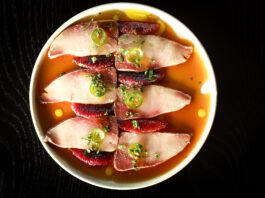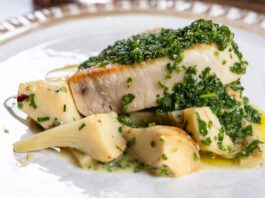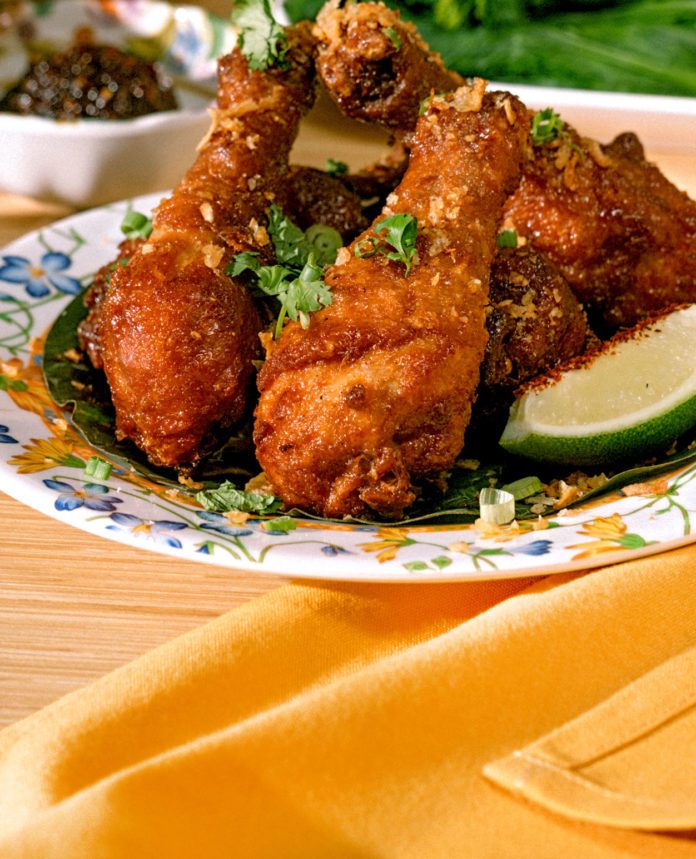
Lao cuisine may not be very well-known outside its native country, but that’s starting to change thanks to chefs like Jeff Chanchaleune, who’s bringing traditional Laotian recipes to OKC. Ma Der Lao Kitchen opened September 2021 and was named one of the best new restaurants in the country this year by The New York Times and Bon Appétit.
Chanchaleune, who is Laotian-American, spent over 20 years cooking Japanese cuisine. He’s the chef behind other OKC powerhouses including Goro Ramen and Gun Izakaya, the latter of which earned him a James Beard Foundation semifinalist slot for Best Chef, Southwest. After moving Goro to the Paseo District, he decided it was time to return to his roots.
“I wanted to do the food I grew up eating and loving,” he says.
Many of the dishes on the menu are based on traditional recipes passed down through Chanchaleune’s mother and grandmother. One of his favorite Lao dishes growing up – and now the restaurant’s most popular offering – is the crispy rice salad. The dish, Chanchaleune says, highlights multiple textural components and flavors, with crisp fried rice, herbaceous cilantro and mint, and crunchy peanuts.
“I didn’t want to water it [the food] down or chef it up too much, because this was going to be the first time Oklahomans were going to have Laos food, and I wanted them to have pure flavors,” he says. He did, however, perfect his recipes by using top-of-the-line ingredients, spices and cooking techniques.
Chanchaleune describes Laos food as “very bold, in your face, unapologetic – favoring more savory, funky, spicy, bitter and sour notes compared to Vietnamese and Thai cuisine, whose flavors are more sweet and sour.”
On the surface, Laotian food may seem unfamiliar. Yet several dishes commonly thought of as Thai cuisine are actually Laotian. Two of these are sticky rice (khao niew) and papaya salad (thum muk hoong) which, along with a traditional minced chicken salad laab gai, are the most popular dishes at Ma Der Lao. Another well-loved offering on the menu, also commonly thought to be Thai in origin, is the khao soi.
“This flavorful pork-based broth originated in the royal capital of Luang Prabang in Laos,” says Chanchaleune. A weekly special served only on Thursdays, the meal features thick rice noodles, bold pork sauce, spicy minced pork, red curry and fermented soy beans.
The key to understanding and appreciating Laotian cuisine, Chanchaleune says, is an open mind and a willingness to try new things.
“I think people will be surprised by how much they like it,” he says.
Ma Der Lao Kitchen’s menu is compact, with shareable dishes served family-style. How you enjoy the food is up to you, says Chanchaleune.
“There is no wrong way to eat Lao food, just create your own favorite bit,” he says. Sticky rice and chili dip are important components of the cuisine. You can eat with your hands by using sticky rice dipped in chili and adding pieces of protein as you go, use utensils, or make a “little sandwich,” as Chanchaleune’s daughter likes to do.
The house-made Lao sausage is a must-try. Chanchaleune recreated this one from memory, and it’s cooked with 20 different herbaceous and savory ingredients. House-made pickles are fermented with jasmine rice for refreshing crunch and acidity. The restaurant also makes two chili dips in-house. The green chili dip is made with jalapenos, and the second, jaew bong, is a roasted sweet red curry dip.
When asked about the accolades he’s received, Chanchaleune says it’s all bigger than just him.
“I want to make the Lao people, the Lao community, very happy, very proud of this food, [as well as] bring back memories and make it nostalgic,” he says. “At the same time, I want to make it accessible to Oklahomans. So far, I think we have been successful with capturing both audiences.
“My goal and vision is finally coming to fruition. What I’m doing is validation for Lao food. We should be on the map and we should have a light shined on us.”
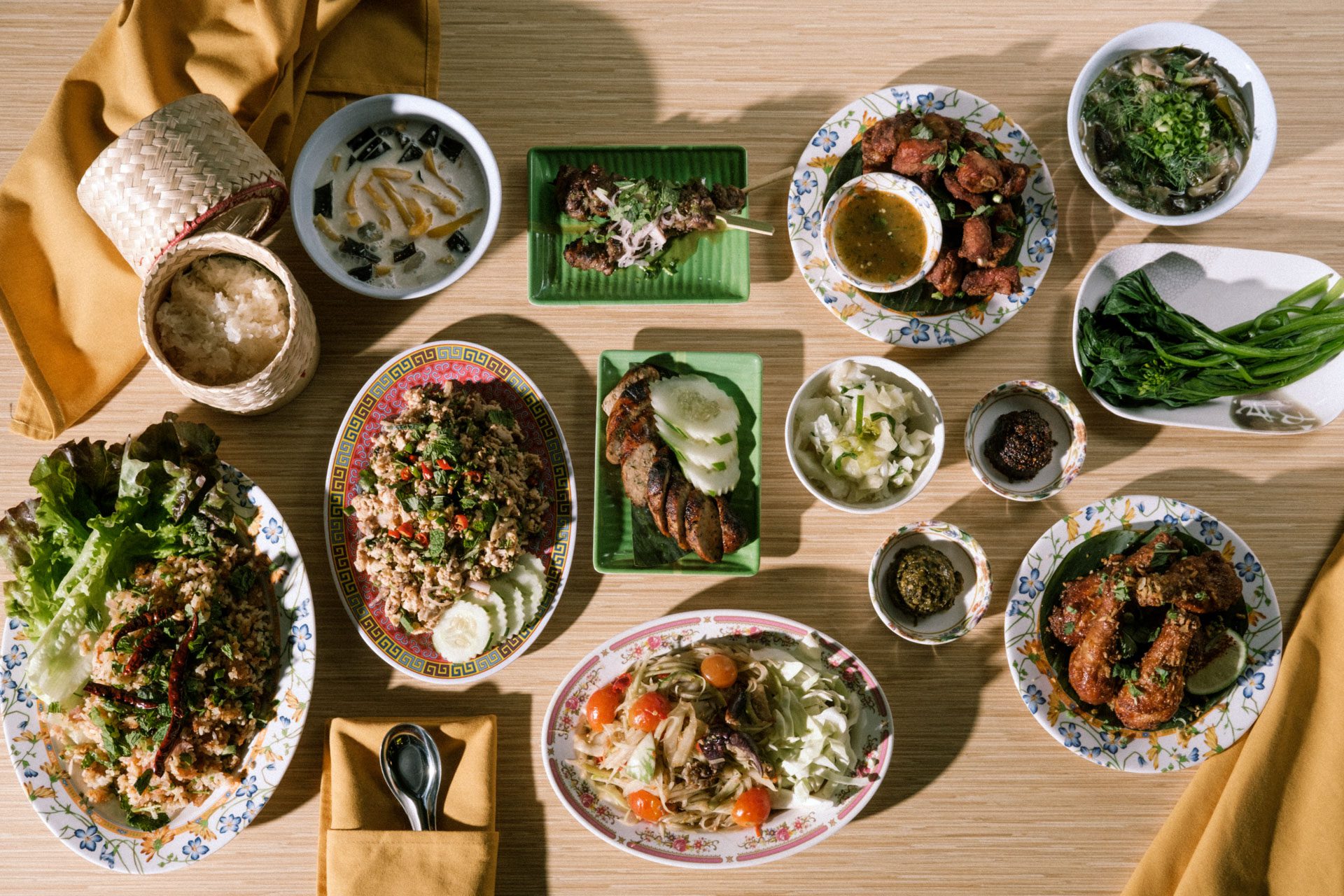
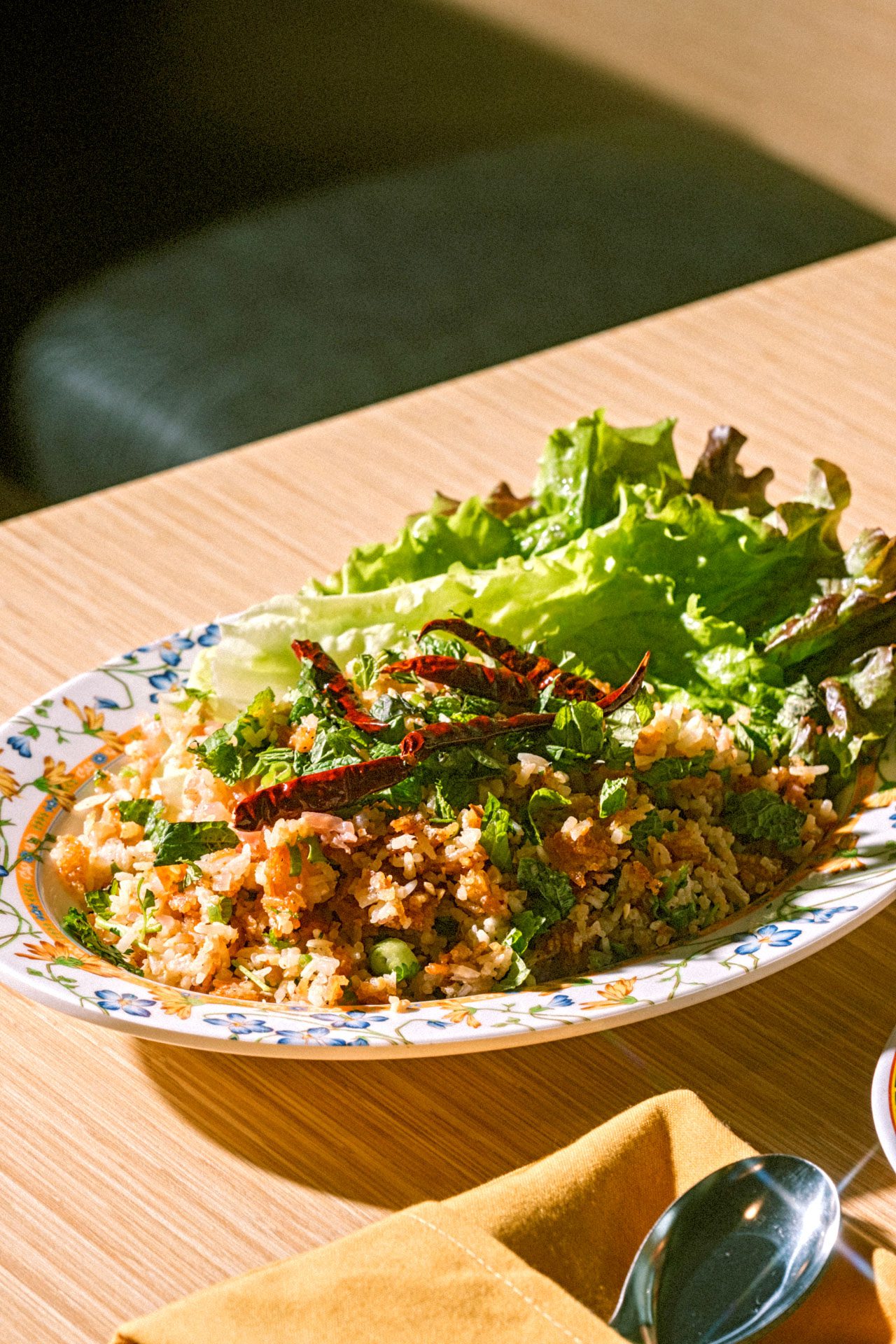
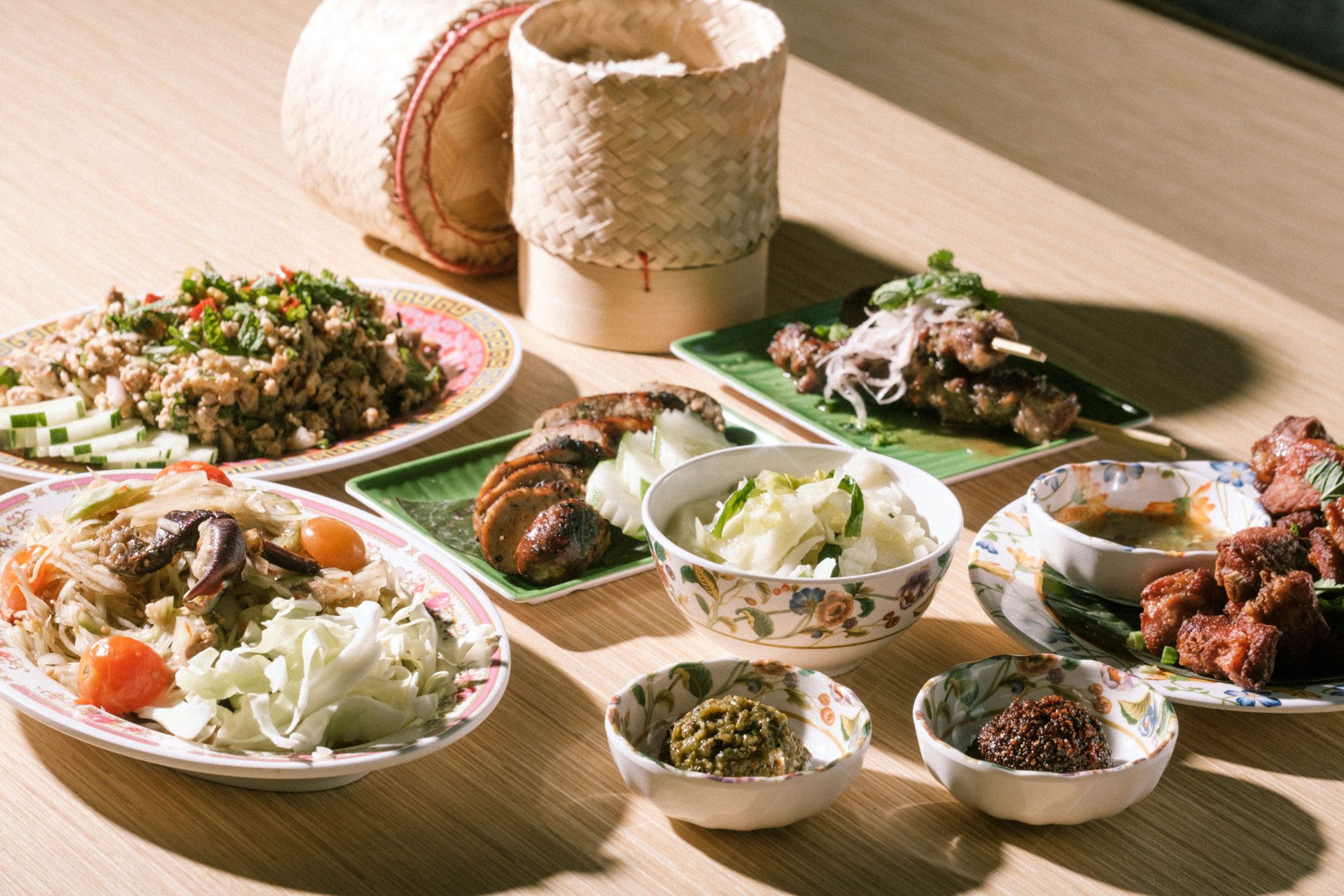
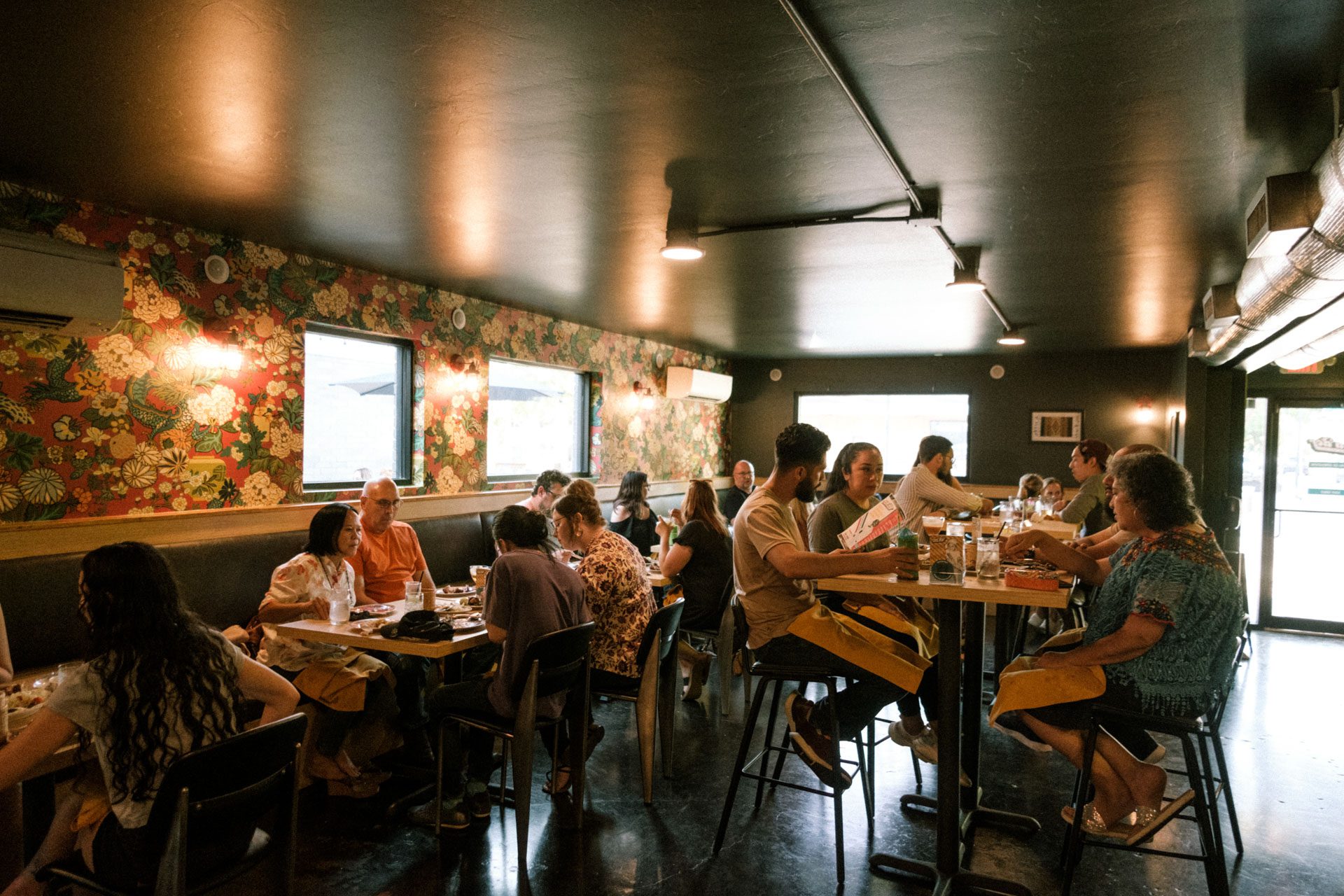


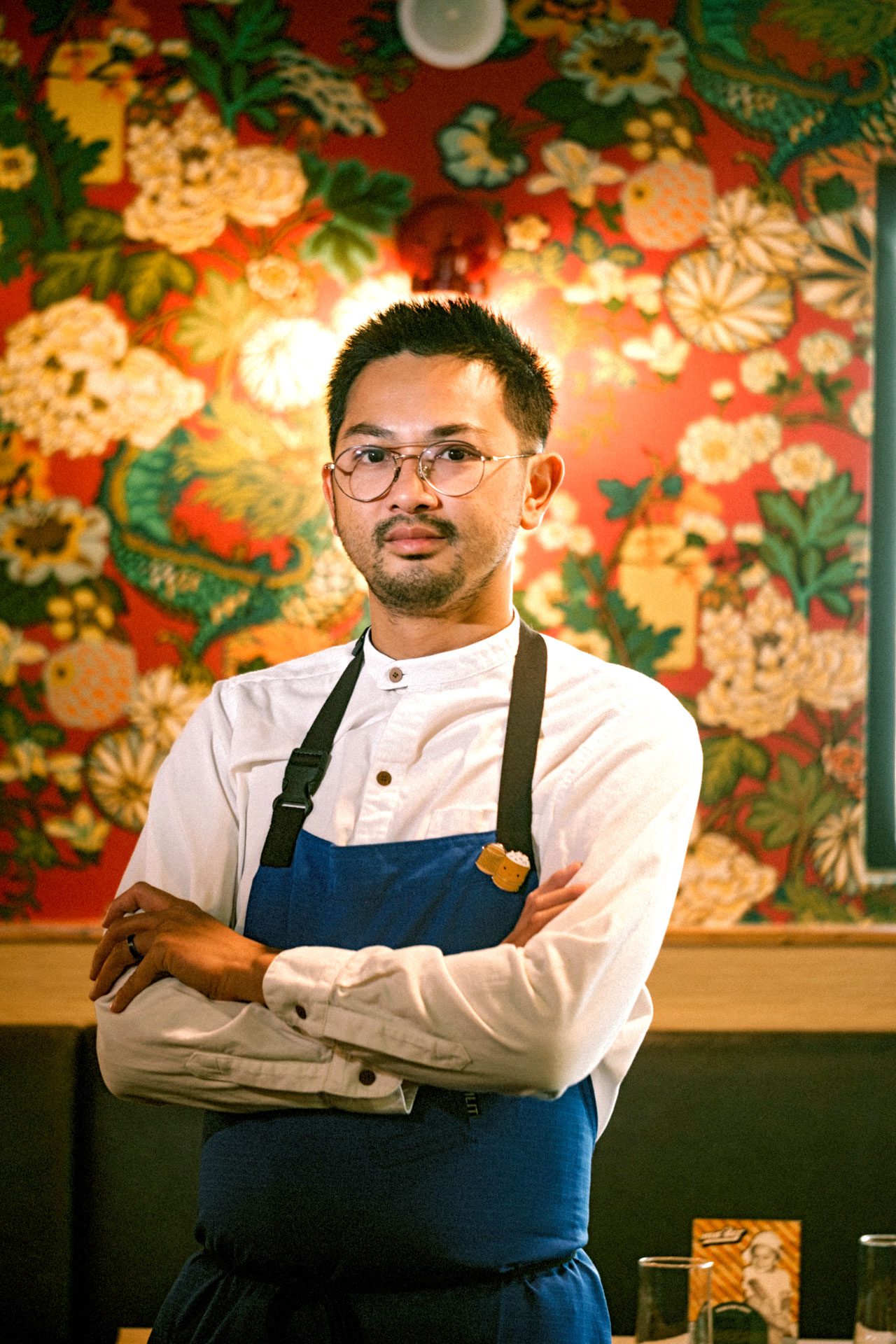
Photos by Quit Nguyen

